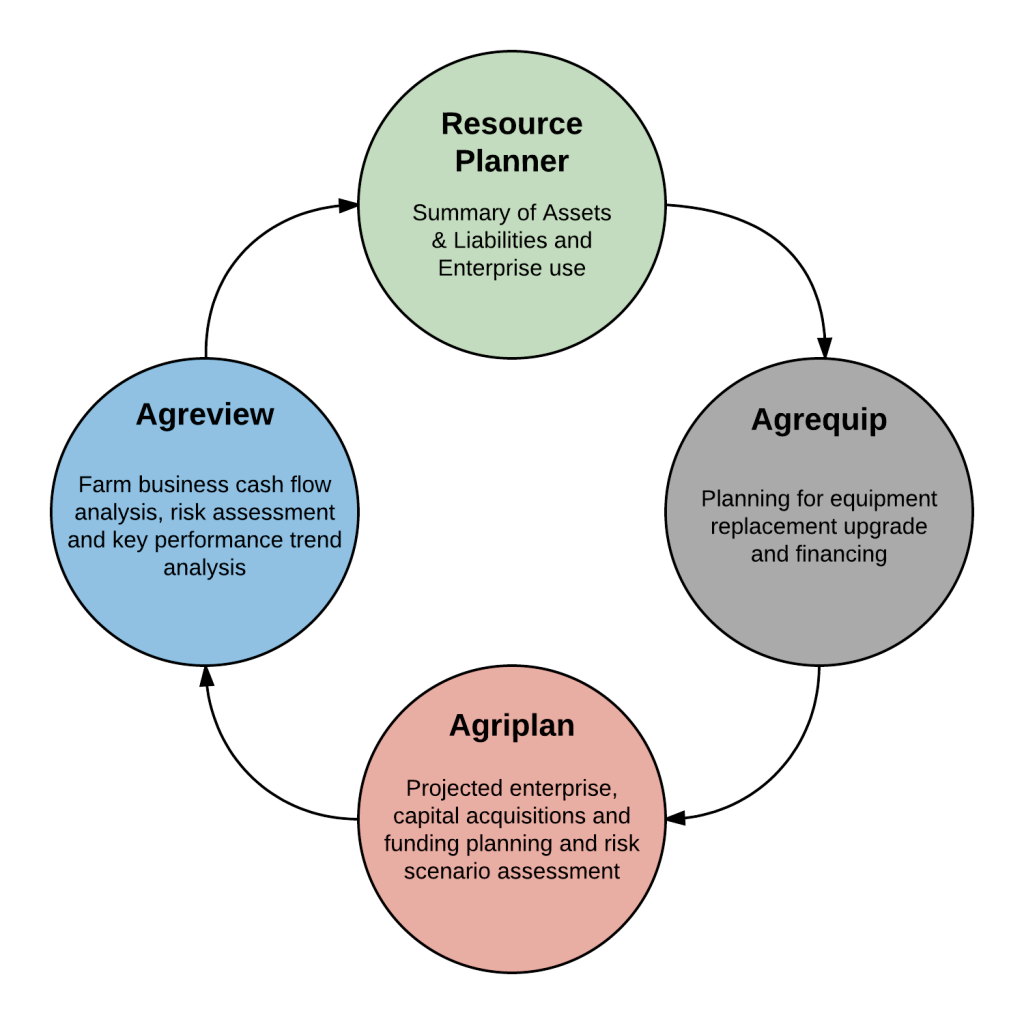The manufacturing of food is a complex business that requires extensive planning, evaluation of a range of different management and financing strategies and decision making in a volatile changing environment.
To optimise the probability that the decisions that are made are the best decisions at the time, it is advisable farmers use management processes and techniques that suit their industry.
Unfortunately, many of the current management concepts, processes and techniques that farmers are encouraged to adopt and use have been modified from traditional cost and financial accounting theory designed originally for other manufacturing , retail and professional businesses.
It is our view, evidenced by the fact that most farmers do not use these traditional methods when it comes to managing their farms and making financial decisions , that a new approach needed to be developed.
The activity of farming is unique in a range of different areas and differs greatly from other industries in regards to what the business owners want to achieve . ( Refer to our paper – “ A New Approach to Farm Management “under Publications on the Home page ) .
Contemporary farm business planning concentrates on enterprise gross margins and cash flow budgets and historical analysis concentrates on comparing the farm business performance to industry benchmarks. When it comes to analysis of actual outcomes, there is little in the way of regular historical financial reporting of plans and previous decisions other than the businesses annual taxation financial statements. These statements in their current form are usually unsuitable for management purposes .
It has been well known for many years that one of the best ways to improve financial performance is to formulate goals and plans, implement the plans, measure and analyse the actual financial outcomes of those decisions and to use this information to improve future plans and decisions.
Unfortunately in the farming sector this rarely occurs.
As the level of complexity and the magnitude of the financial decisions farmers need to make escalates, especially in areas such as equipment replacement and upgrade ,enterprise mix , acquisition of inputs , the selling of product, land acquisition, accumulation of assets and personal expenditure , it is essential that suitable planning and analysis techniques and processes are developed to address the practical needs and requirements of modern day farmers .
Our Solution
Experience has revealed , that due to the intimate association of the family to the business and the close connection between business management and ownership, that the family farmers we deal with on a regular basis are generally not interested in profit and losses before earnings and tax , depreciation , labour units or equity percentages . These farmers know their family drawings can be derived from a range of funding sources and when it comes to labour they just go ahead and do what is required when it is required.
What they are really interested in though, is cash flow to maintain and support the family and increase their equity over time for the long term sustainability and viability of the family farm business.
We have identified that these farmers need different analysis reports and planning programs that focus on – Sources of funds and the Application of those funds and changes in equity over time as opposed to traditional profit and loss statements, historical cost balance sheets and elementary gross margins and cash flow budgets.
As a result the reporting software we have developed does not calculate a traditional profit or loss but calculates real available cash flow for expansion after allowing for personal drawings, taxation, committed payments and the actual cash used in the replace or upgrade of plant and equipment. The focus is on the use of cash in the business and the resultant long term trends in the business to identify areas of risk and areas where the farmers can modify their decisions to improvement financial performance.
Our online software is designed to concentrate on farm specific key performance indicators so planning is focused on the profit drivers and sources of cash flow in the business to enable the farmers to be able to model the potential financial outcomes of various capital decisions under different circumstance and conditions.
This enables the running of complex scenarios so users can assess the financial risk of alternative plans prior to their implementation. Special emphasis is placed on the speed of processing and the transparency of the calculations so the farmer can quickly arrive at a result that they can interpret and implement.
Once the plan has been implemented and the financial results processed at year end , the farmer can refer to the outcomes and analysis reports to assess actual performance in comparison with the original plan , with a view to either continuing on the current course or by taking corrective action.
The plans and reports are specific to the farmers individual farm and this allows for ongoing trend analysis of relevant key performance indicators .
As the programs can be accessed on the internet the farmer can use these programs on their own or they can use them collaboratively with their financial advisers. This overcomes the tyranny of distance and isolation that many family farmers experience when it comes to planning and complex decision making.


